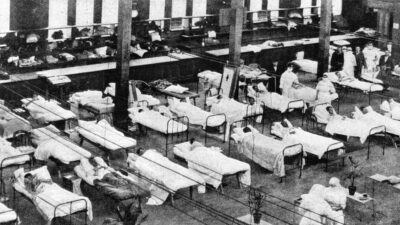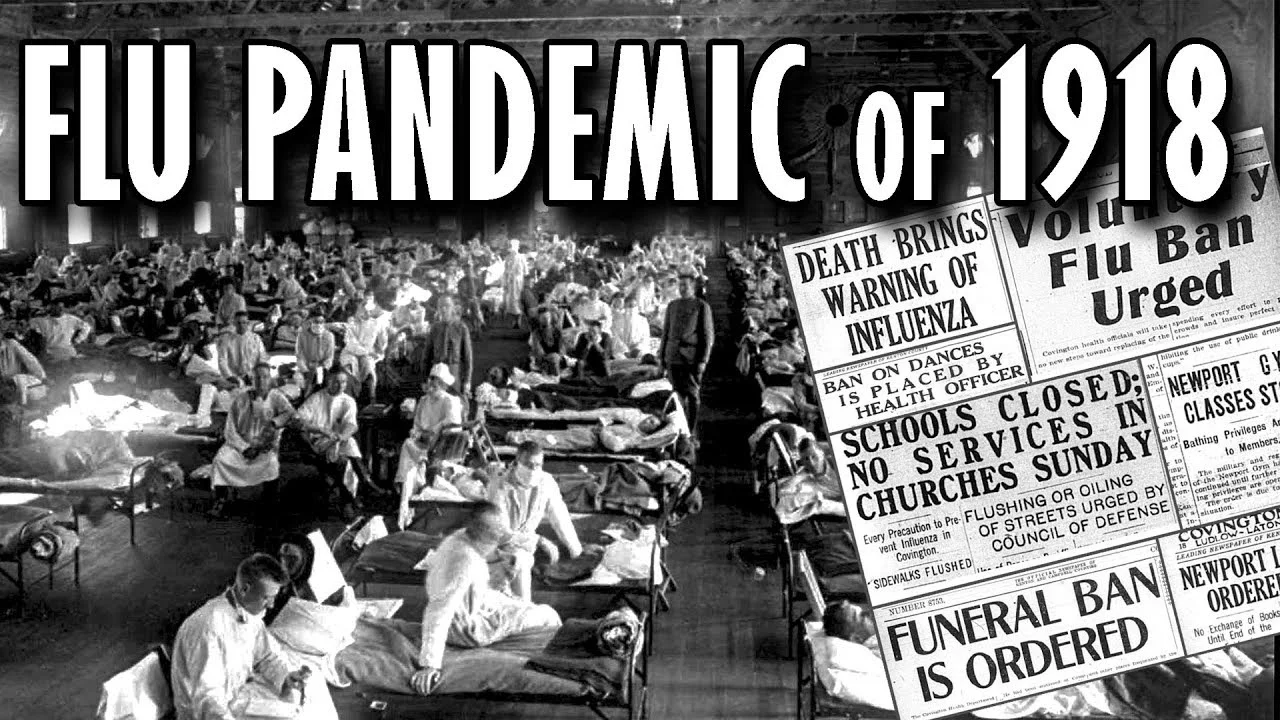The 1918 Influenza Pandemic, also known as the Spanish Flu, stands as one of the deadliest disease outbreaks in modern history. Sweeping across the gl
The 1918 Influenza Pandemic, also known as the Spanish Flu, stands as one of the deadliest disease outbreaks in modern history. Sweeping across the globe in the final year of World War I, this pandemic infected about one-third of the world’s population and resulted in an estimated 50 million deaths worldwide. Despite its massive impact, it remains a subject of much study and reflection, especially as the world continues to grapple with infectious diseases.
Must visit: experttrading

Origins and Naming
The pandemic is often referred to as the “Spanish Flu,” but this name is misleading. The virus did not originate in Spain. The misnomer arose because Spain, a neutral country during World War I, had a free press that openly reported on the outbreak, unlike countries involved in the war which censored news to maintain morale. The actual origin of the virus remains uncertain, with theories suggesting it could have emerged in the United States, France, or China.
The Virus and Its Impact
The influenza virus responsible was an H1N1 strain with genes of avian origin. What made the 1918 virus particularly deadly was its ability to cause severe pneumonia and an overreaction of the immune system, known as a cytokine storm, especially in young, healthy adults. This was unusual because influenza typically causes the most severe illness in the very young and elderly.
The pandemic occurred in three waves: the first wave in the spring of 1918, which was relatively mild; the deadly second wave in the fall of 1918; and a third wave in early 1919. The second wave was particularly catastrophic, overwhelming hospitals and communities worldwide.
Global Spread and Death Toll
The pandemic spread rapidly due to the movement of troops during World War I and global trade routes. It affected countries on every continent, with varying death rates. Urban centers, military camps, and poor communities were hit hardest. The United States alone saw approximately 675,000 deaths, while countries like India suffered an estimated 12-17 million fatalities.
In total, it is believed that around 500 million people were infected globally, roughly one-third of the world’s population at the time.
Public Health Response
Public health infrastructure in 1918 was limited compared to modern standards. Governments and health officials implemented various measures to contain the spread, including quarantines, bans on public gatherings, school closures, and mandatory mask-wearing. However, the understanding of viruses was minimal, and antibiotics for secondary bacterial infections were not yet available.
Despite these challenges, some cities managed to reduce mortality rates by implementing early and sustained interventions. For example, St. Louis in the U.S. was praised for its quick response compared to cities like Philadelphia, where public events went ahead and cases soared.
Societal and Economic Consequences
The pandemic had profound social and economic effects. It disrupted daily life, strained healthcare systems, and caused labor shortages. Many businesses and factories had to close temporarily, and the war effort was impacted by the loss of soldiers.
Socially, the pandemic led to fear and stigma, with some communities facing discrimination if they were believed to be sources of infection. The trauma also influenced literature, art, and public health policy for decades to come.
Lessons Learned and Legacy
The 1918 influenza pandemic exposed the weaknesses in global health preparedness and highlighted the importance of rapid response to infectious disease outbreaks. It prompted advances in epidemiology, virology, and public health infrastructure. The experience shaped future pandemic planning, including vaccine development and the use of public health interventions.
Modern influenza surveillance and vaccination programs owe much to the scientific advancements spurred by the 1918 crisis.
Frequently Asked Questions (FAQs)
What caused the 1918 influenza pandemic?
The pandemic was caused by an H1N1 influenza A virus with avian-like genes. This virus was highly contagious and unusually deadly due to its ability to provoke a severe immune response in healthy individuals.
Why is it called the Spanish Flu if it didn’t start in Spain?
The name “Spanish Flu” came from wartime censorship. Spain’s neutral press openly reported on the disease, giving the false impression that Spain was the epicenter. The actual origin remains uncertain.
How many people died from the 1918 pandemic?
Estimates suggest between 50 to 100 million people died worldwide. The wide range is due to incomplete records and reporting during the time.
Who was most affected by the 1918 influenza virus?
Unlike typical flu viruses, which mainly threaten the very young and elderly, the 1918 virus disproportionately affected young, healthy adults aged 20-40, likely due to the intense immune response it triggered.
What were common symptoms of the 1918 flu?
Symptoms included typical flu signs like fever, cough, sore throat, and fatigue. Many developed severe pneumonia and acute respiratory distress, often leading to death within days.
How did the pandemic end?
The pandemic ended as populations developed immunity, and the virus mutated into less deadly forms. The third wave was less severe, and by 1919, the pandemic largely subsided.
Were there vaccines or treatments available in 1918?
No effective vaccines or antiviral treatments existed at the time. Treatment was mostly supportive, focusing on managing symptoms and preventing secondary infections, though antibiotics were not yet available.
How did World War I affect the spread of the flu?
The war facilitated rapid global spread due to troop movements, crowded military camps, and poor sanitary conditions. The movement of soldiers helped carry the virus across continents.
What public health measures were used to control the pandemic?
Measures included isolation, quarantine, bans on public gatherings, school closures, and mask mandates. The effectiveness varied widely depending on how early and strictly these measures were applied.
What can we learn from the 1918 pandemic today?
It underscores the importance of preparedness, early intervention, transparent communication, and scientific research in managing pandemics. It also highlights the potential impact of a novel virus on global health.
The 1918 influenza pandemic remains a crucial chapter in global health history. Its devastating impact reshaped public health policies and continues to inform responses to viral outbreaks nearly a century later. Understanding this event helps prepare societies to better face future pandemics with resilience and knowledge.



COMMENTS